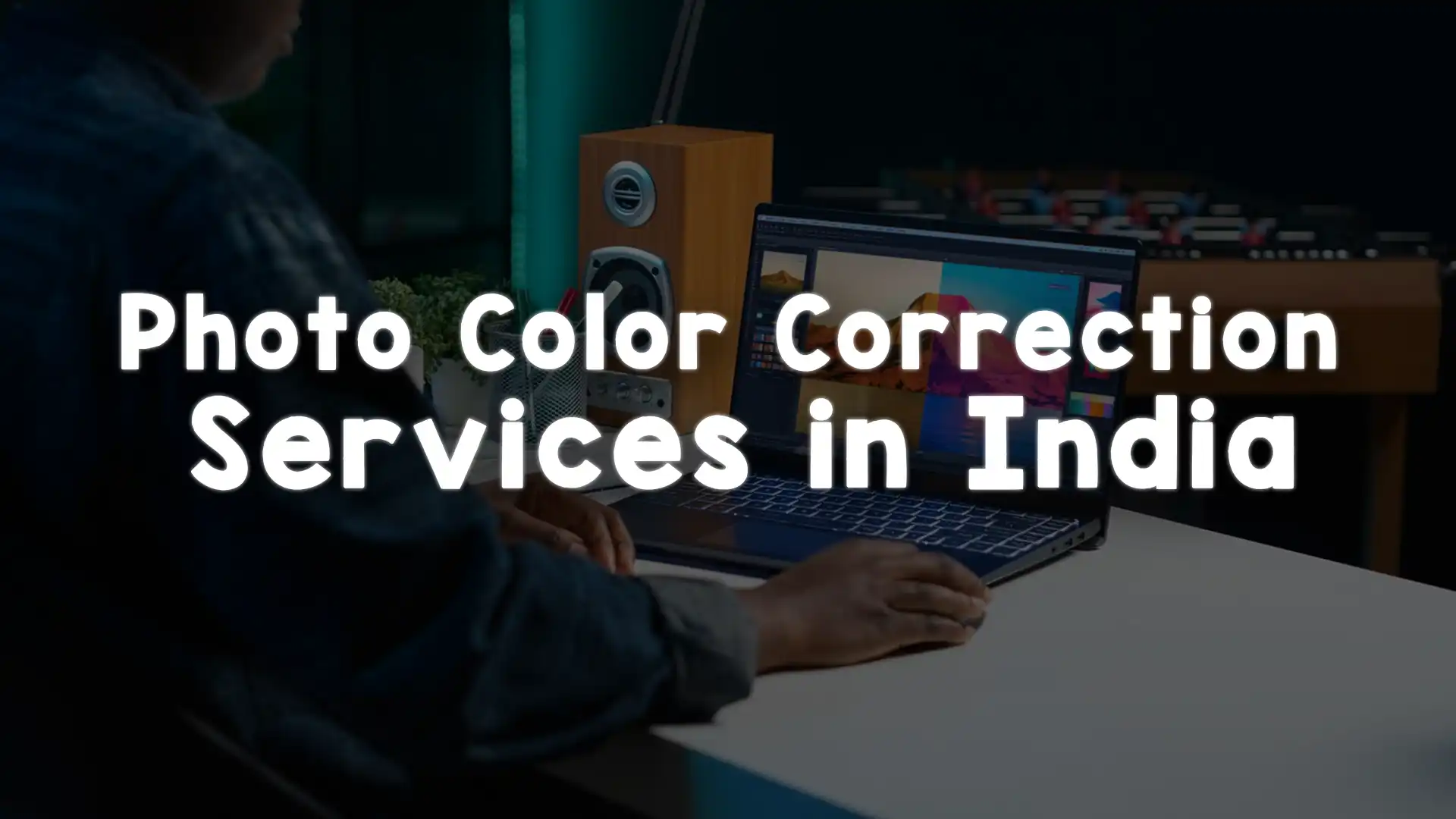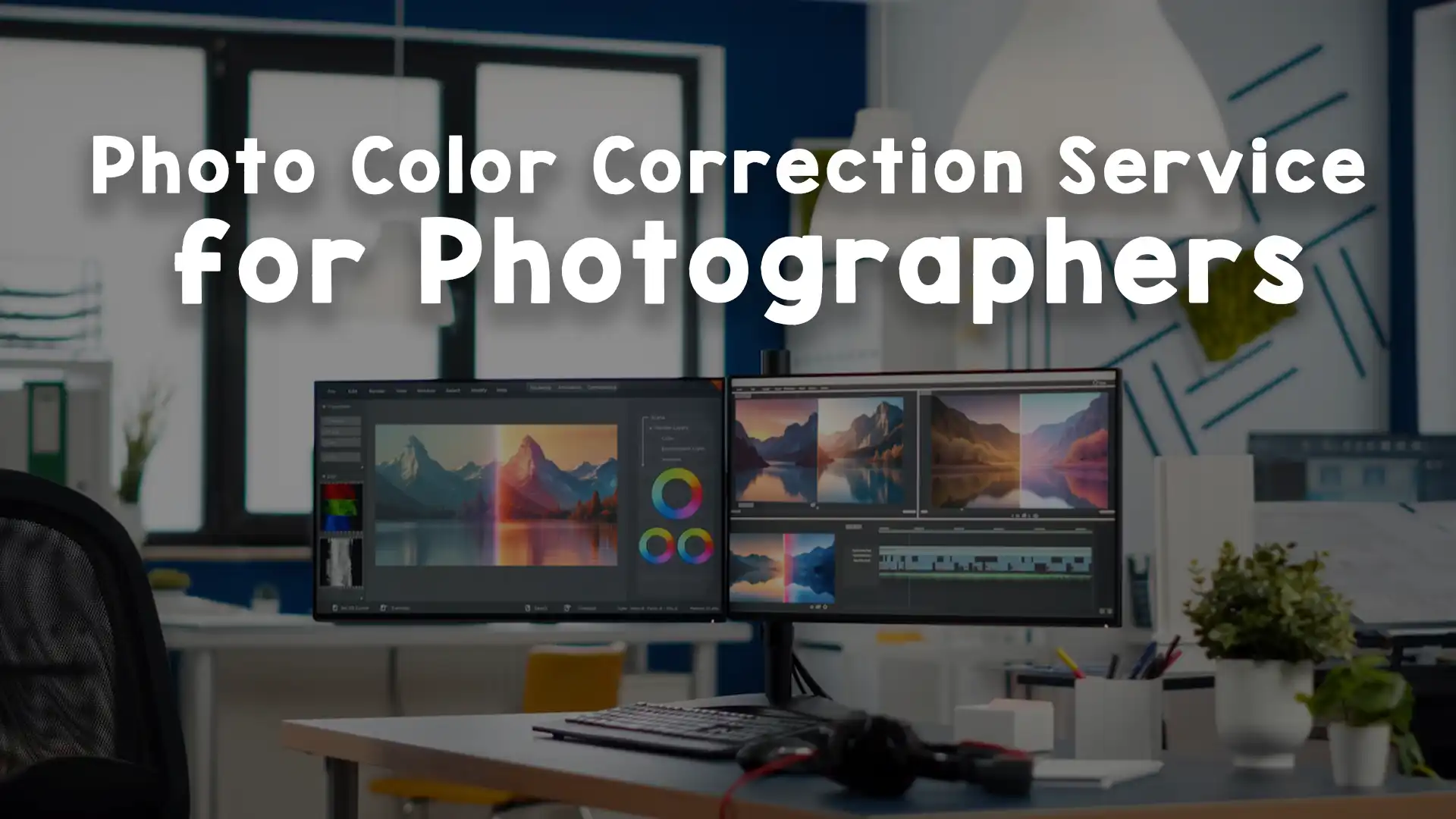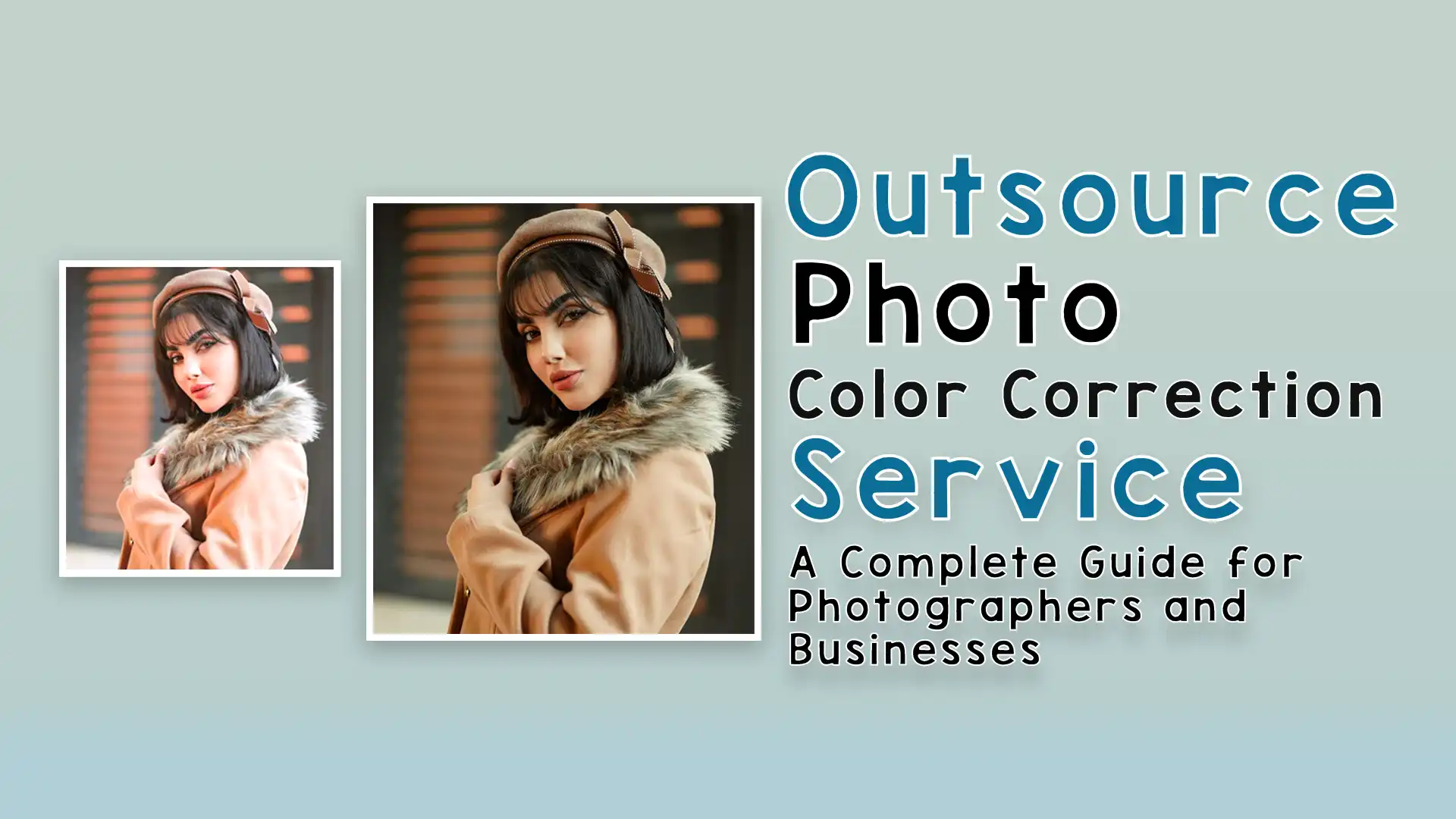Photography is all about capturing moments, but sometimes the colors in those moments don’t come out quite right. Maybe the lighting was off, or the camera didn’t pick up the hues exactly as you saw them. That’s where photo color correction services step in to save the day. These services transform dull, lifeless images into vibrant, eye-catching masterpieces by adjusting tones, brightness, and contrast. If you’ve ever wondered how photo color correction services work, this article will take you through the process step by step in an easy-to-understand way. Whether you’re a beginner or just curious, you’ll get a clear picture of what happens behind the scenes to make your photos pop.
At its core, photo color correction services are about fixing and enhancing the colors in an image to make them look natural or stylized, depending on what you’re going for. Professionals use a mix of software, expertise, and creativity to tweak everything from shadows to highlights. Companies like Image Work India specialize in this kind of work, offering solutions for photographers, businesses, and anyone who wants their images to stand out. Let’s dive into the process and see how it all comes together.
Why Photo Color Correction Services Matter
Before we get into the how, let’s talk about the why. Photos don’t always turn out perfect straight from the camera. Lighting conditions, camera settings, or even the weather can mess with the colors. A sunset might look too orange, or a portrait might have an unflattering green tint from indoor lights. Photo color correction services fix these issues so the image reflects what you intended—or even better. It’s not just about fixing mistakes, though. These services can also enhance photos to make them more appealing for things like marketing, e-commerce, or personal keepsakes.
Think about a product photo for an online store. If the colors are off, customers might not trust what they’re seeing, and that could hurt sales. Or imagine a wedding album where the bride’s dress looks gray instead of white—photo color correction services can bring it back to life. The goal is to make sure every detail shines through, from the subtle shades in a landscape to the bold tones in a fashion shoot. This is why professionals rely on services like those offered by Image Work India to get consistent, high-quality results.
The First Step: Analyzing the Image
The process of photo color correction services starts with a close look at the image itself. Experts don’t just jump in and start tweaking—they take time to understand what’s wrong and what needs to be improved. Is the photo too dark? Are the colors washed out? Maybe there’s a color cast, like a blue tint from fluorescent lighting. This analysis is key because every image is different, and a one-size-fits-all approach doesn’t work.
During this stage, professionals examine things like exposure, white balance, and saturation. Exposure is about how light or dark the image is, while white balance determines if the colors look natural under different lighting conditions. Saturation controls how intense the colors are—too much, and the photo looks unnatural; too little, and it’s dull. By studying these elements, the editor figures out what adjustments are needed. At Image Work India, for example, this step is handled with care to ensure the final result matches the client’s vision.
Tools of the Trade
Once the analysis is done, it’s time to bring out the tools. Photo color correction services rely heavily on powerful software to make precise changes. Programs like Adobe Photoshop and Lightroom are popular choices because they offer a wide range of features for adjusting colors, brightness, and more. These tools let editors zoom in on specific parts of an image or apply changes across the whole thing, depending on what’s needed.
Photoshop, for instance, has options like the Curves tool, which lets editors fine-tune the brightness and contrast of different color channels—red, green, and blue. Lightroom, on the other hand, is great for batch editing, meaning it can apply the same corrections to multiple photos at once. Some editors also use specialized plugins or even AI-powered tools to speed up the process while keeping the quality high. The choice of software depends on the complexity of the job, but the goal is always the same: to make the image look its best.
Adjusting White Balance for Natural Colors
One of the first fixes in photo color correction services is often the white balance. This is what keeps colors looking true to life. If you’ve ever taken a photo indoors and noticed it looked yellowish or bluish, that’s a white balance issue. It happens because different light sources—like sunlight, tungsten bulbs, or LEDs—have different color temperatures. Cameras try to adjust for this automatically, but they don’t always get it right.
Editors fix this by setting a neutral point in the image, like a white wall or a gray object, and adjusting the colors around it. In software, this might mean sliding a temperature control to make the image warmer (more yellow) or cooler (more blue). They might also tweak the tint to shift away from green or magenta tones. Getting the white balance right is crucial because it sets the foundation for all the other color adjustments. Without it, even a perfectly edited photo can look off.
Fine-Tuning Exposure and Contrast
With the white balance sorted, the next focus in photo color correction services is exposure and contrast. Exposure is about balancing the light and dark areas. If a photo is underexposed, it’s too dark, and details get lost in the shadows. If it’s overexposed, it’s too bright, and highlights might be blown out. Editors adjust the exposure to bring back those lost details, making sure the image feels well-lit but not harsh.
Contrast comes into play here too. It’s the difference between the lightest and darkest parts of the photo. Low contrast can make an image look flat, while too much contrast can make it look dramatic or unnatural. Editors tweak this carefully, often using tools like sliders or curves, to find the sweet spot. The result is a photo that feels dynamic and balanced, with just the right amount of depth.
Enhancing Colors with Saturation and Vibrance
Now that the basics are covered, photo color correction services move on to making the colors pop. This is where saturation and vibrance come in. Saturation controls the intensity of all the colors in the image. Crank it up too high, and you get a cartoonish look; keep it too low, and the photo feels lifeless. Vibrance is a smarter adjustment—it boosts the less intense colors without overdoing the already bold ones, which helps avoid that unnatural effect.
Editors play with these settings to match the mood of the photo. A nature shot might get a vibrance boost to make the greens and blues stand out, while a portrait might use subtle saturation to keep skin tones looking real. This step is all about enhancing what’s already there, not changing the image into something it’s not. It’s a delicate balance, and skilled editors know how to strike it just right.
Working with Color Channels
For more advanced fixes, photo color correction services dive into individual color channels—red, green, and blue. Every digital photo is made up of these three channels, and tweaking them separately can solve tricky problems. Say a photo has too much red in the shadows but not enough in the highlights. An editor can adjust the red channel alone, leaving green and blue untouched, to even things out.
This technique is especially useful for removing color casts or creating specific effects. For example, boosting the blue channel in the midtones can make a sky look richer without affecting the rest of the image. It’s a precise way to sculpt the colors, and it takes a trained eye to know when and how to use it. This level of detail is what sets professional services apart from basic edits.
Correcting Specific Areas with Masks and Layers
As photo color correction services get deeper into the process, the focus often shifts to specific parts of the image. Not every photo needs the same adjustments everywhere—maybe the sky is too pale, but the foreground looks fine, or a person’s face needs a tweak while the background is perfect. This is where masks and layers come in handy. These tools, found in software like Photoshop, let editors isolate areas and apply changes only where they’re needed.
Masks work like a stencil. An editor might paint over the sky to brighten its blues without touching the trees below. Layers stack adjustments on top of each other, so they can tweak the contrast in one part and the saturation in another without mixing them up. This targeted approach ensures the photo stays cohesive while fixing problem spots. It’s a bit like surgery for images—precise and careful. Companies like Image Work India use this technique to deliver polished results that look natural, not overdone.
Removing Color Casts for a Clean Look
Sometimes an image has an unwanted tint across the whole thing—a yellow glow from old lights or a blue haze from a cloudy day. These are called color casts, and photo color correction services are experts at getting rid of them. The process starts with identifying the cast, which might show up as an odd hue in areas that should be neutral, like whites or grays.
To fix it, editors often use a tool called the Color Balance adjustment. This lets them add or subtract colors—like reducing yellow to counter a warm cast or adding magenta to offset a green tint. Another method is using a gray card or eyedropper tool to pick a neutral point in the image and let the software balance everything around it. The result is a cleaner, more accurate photo that doesn’t distract with weird tones. This step can make a huge difference, especially for professional shots where clarity is everything.
Bringing Out Details with Shadows and Highlights
A big part of photo color correction services is making sure no detail gets lost. Shadows can hide texture in dark areas, while blown-out highlights can erase features in bright spots. Editors tackle this by adjusting the shadows and highlights separately. In tools like Lightroom or Photoshop, there are sliders dedicated to lifting shadows or recovering highlights, bringing back what the camera might have missed.
For example, in a sunset photo, the sun might be so bright that the clouds around it disappear into white. By pulling down the highlights, an editor can reveal those cloud shapes again. Or in a portrait, lifting the shadows can show more detail in dark hair or clothing. This step isn’t just about color—it’s about making the image richer and more engaging. It’s a subtle art, but it’s one of the things that makes corrected photos feel alive.
Adding Creative Touches
While most photo color correction services focus on fixing and enhancing, there’s room for creativity too. Some clients want more than just accuracy—they want a specific vibe. Maybe it’s a warm, golden look for a vintage feel or a cool, muted tone for a modern aesthetic. Editors can push the colors in these directions by playing with the overall tone or applying filters.
This might mean boosting the oranges and yellows for that golden hour glow or dialing back the saturation for a softer, dreamy effect. Tools like split toning come in here, letting editors add different colors to the shadows and highlights—like teal shadows and warm highlights—for a stylized look. It’s still about balance, though. The best editors know how to add flair without losing the photo’s essence.
Quality Checks and Final Adjustments
No photo color correction service is complete without a final once-over. After all the tweaks—white balance, exposure, saturation, and more—the editor steps back to review the whole image. They zoom in to check for artifacts, like noise or weird edges from masking, and zoom out to see how it looks overall. This is the polishing phase, where small adjustments can tie everything together.
Sometimes they’ll compare the edited version to the original to make sure they haven’t gone too far. They might tweak the sharpness a bit or adjust the brightness one last time. It’s also a chance to double-check the client’s goals—did they want a natural fix or a bold enhancement? This attention to detail ensures the photo is ready for its close-up, whether it’s going on a website, into a frame, or onto a product page.
Why Professionals Make a Difference
You might wonder why photo color correction services matter when there are apps that promise quick fixes. The truth is, automated tools can only do so much. They might slap a filter on or adjust the brightness, but they don’t understand the nuances of each image. A professional editor brings experience and a human eye to the table, catching things an algorithm might miss—like a subtle color cast or a shadow that needs lifting.
Take a service like Image Work India, for instance. Their team knows how to handle everything from tricky lighting to complex creative requests. They don’t just edit—they solve problems and elevate photos to meet specific needs. That’s the value of expertise: it turns a good photo into a great one, tailored to what you’re after.
Real-World Uses of Photo Color Correction Services
Photo color correction services aren’t just for artsy shots—they’re everywhere. In e-commerce, they ensure product colors match reality so customers know what they’re buying. In real estate, they make homes look inviting with bright, accurate tones. Photographers use them to perfect wedding albums or portfolios, while marketers rely on them for ads that grab attention. Even personal photos, like vacation snaps, can benefit from a little professional polish.
Imagine a clothing brand shooting a new line. The studio lights might make the fabric look dull, but color correction brings out the true reds, blues, or greens. Or think of a travel blogger posting a beach photo—the water might look gray without correction, but a pro can make it sparkle like the real thing. These services adapt to any situation, making them a go-to for anyone who cares about visuals.
Promoting Image Work India
We’re proud to be your go-to for photo color correction services at Image Work India. Our image editing services cover everything from simple fixes to complex enhancements, all tailored to what you’re after. Whether you’re a business polishing product shots or someone sprucing up personal memories, we’ve got the expertise to make it happen.
Visit us at Image Work India to see how we can transform your images. We’re all about quality, precision, and making your photos the best they can be. Don’t settle for off-colors or dull shots—let us bring them to life with our professional touch. Reach out today and let’s get started on your next standout image!




